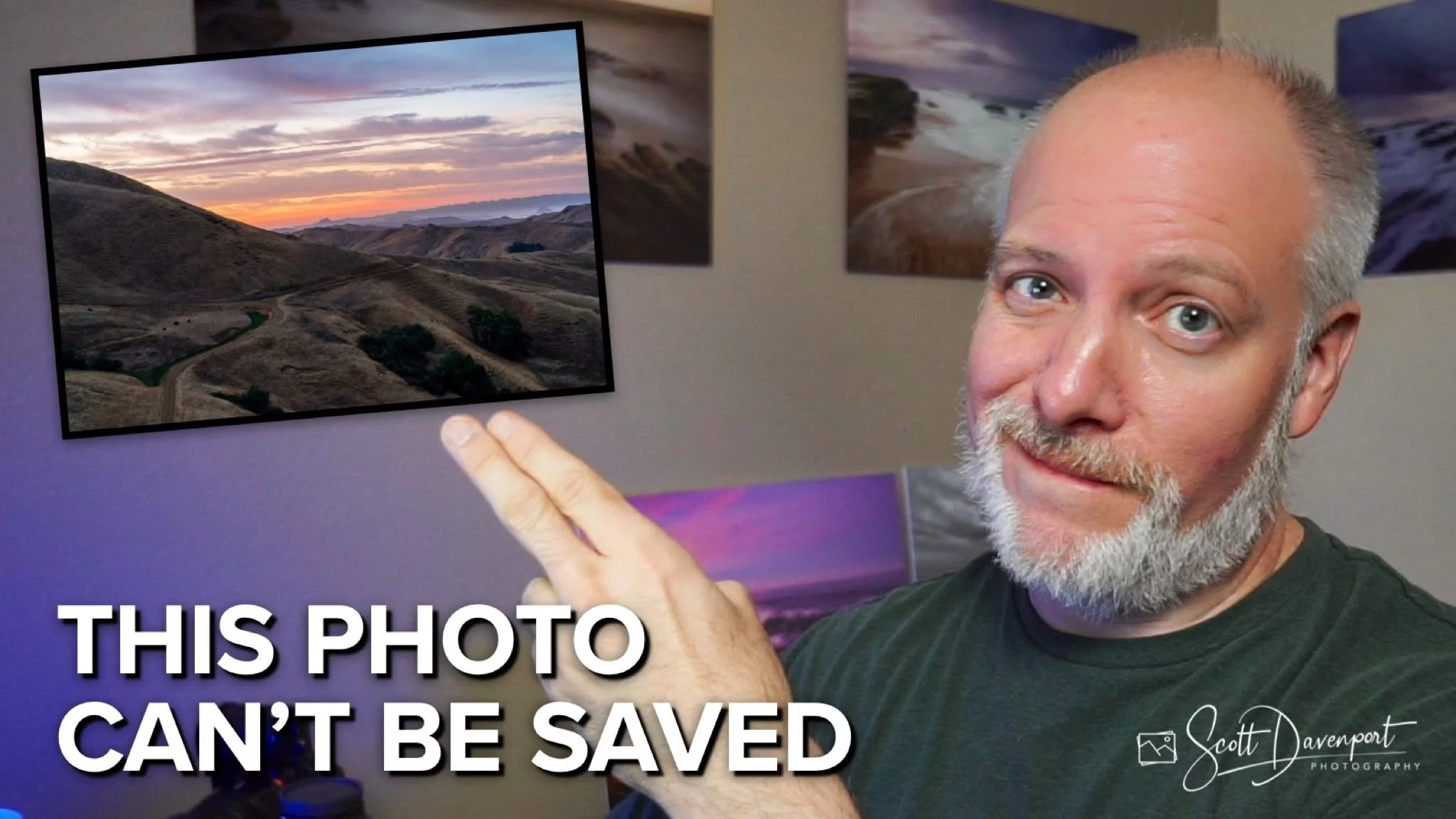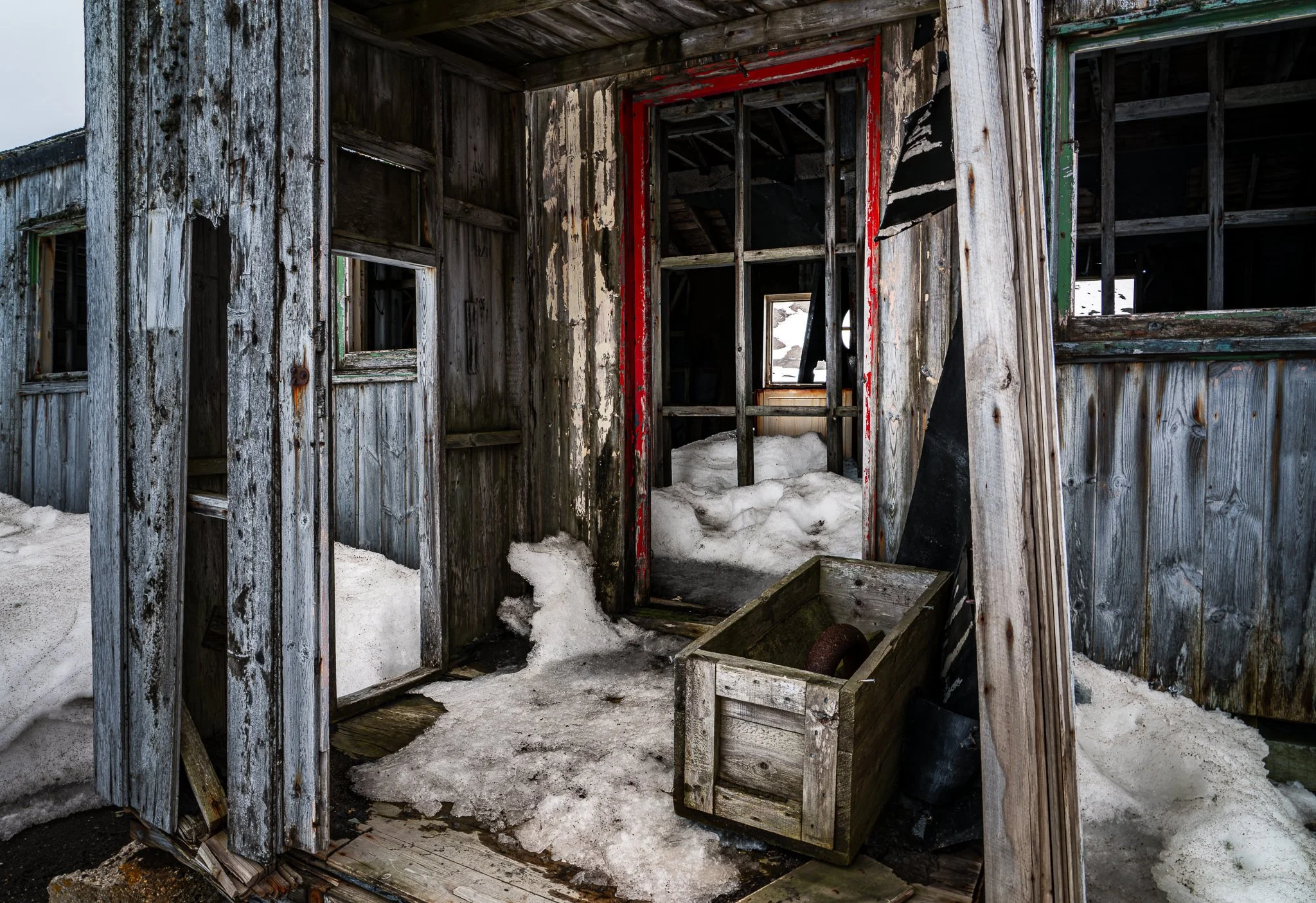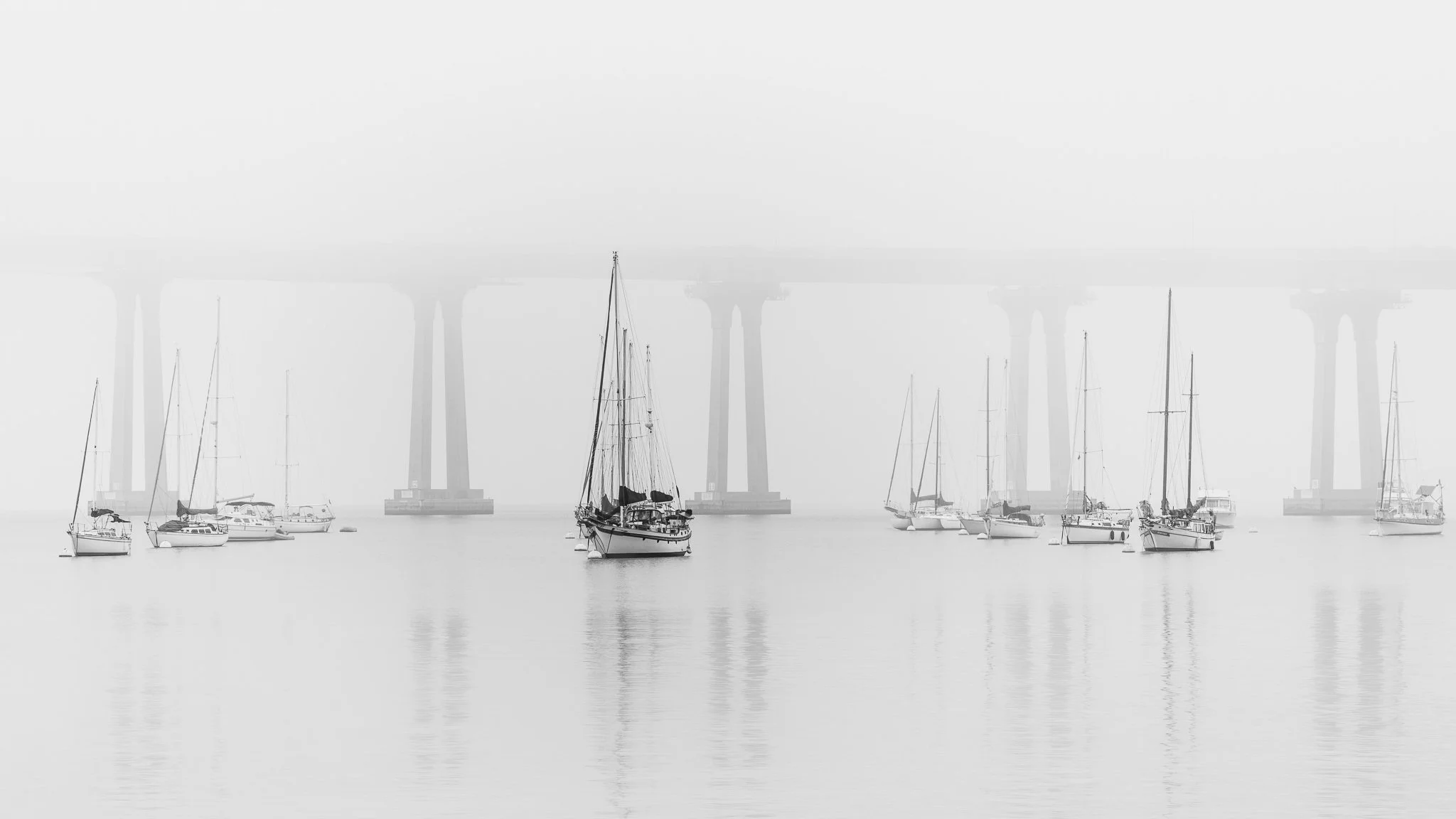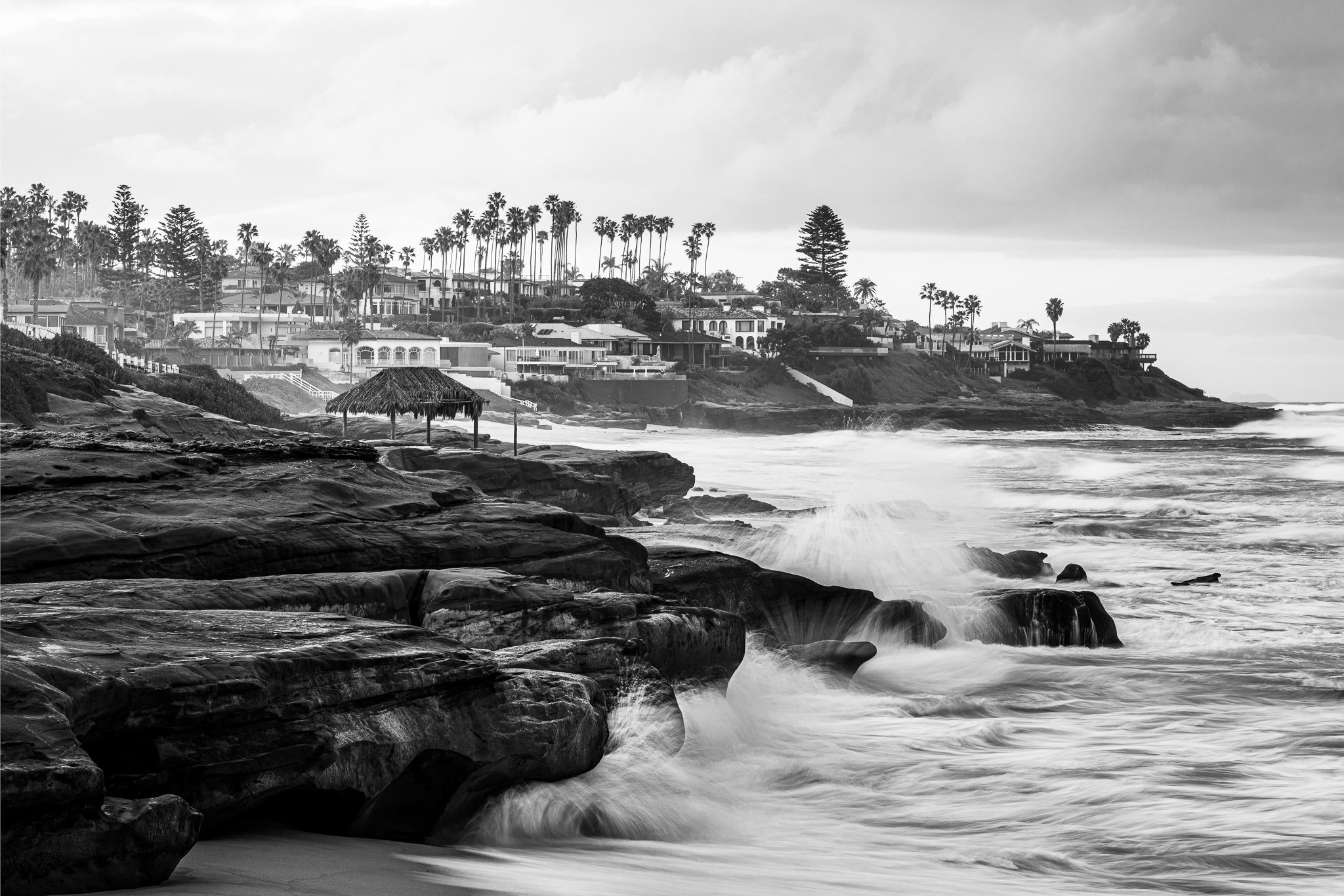When to Stop Editing and Move On
If you enjoy posts like this, please support my work and support independent photography tutorials like this.
Not every landscape photo can be saved no matter how much time and effort you put into editing. The reason your photo can’t be saved can vary from poor composition, out-of-focus issues, lackluster lighting, or extreme exposure issues. Save yourself a headache and recognize when it's time to cut your losses and move on to a better shot. There is a balance between creative vision and reality. Knowing when to stop editing can save you time and frustration, allowing you to focus on photos that truly have potential.
Why This Photo Can’t Be Salvaged
When I captured this photo, I was very excited. I like the composition, the lines in the hills, the dirt roads cutting through the ridge lines, and the balance of foreground, midgraound, and background. Sunrise painted the sky in a pleasing array of colors. I was eager to edit it.
I was excited about this image when I captured it. Leading lines, a lovely sky… I was eager to edit it.
After working in Lightroom for (if I’m honest) longer than I should have, I couldn't get the photo to match my mind’s eye. I pushed sliders, applied masks, fiddled with color grading… nothing was working. I pushed the photo through other plugins in a futile attempt to bring the image to life.
This photo cannot be saved.
I was not getting the results I wanted in Lightroom. I tried a lot of sliders and different masks (more than I should have bothered with).
Plugins would also not save this image. The light is simply not right for the composition.
Why? The light isn’t there. Although the composition is good, the composition does not work with the available light. With the sun rising behind the hill on the left of the frame, the foreground is in shadow. The ridges in the foreground will not catch the morning light, to offset them from the valleys. As interesting as the lines are in the foreground, they are poorly lit. This composition at this location doesn’t work at sunrise.
A sunset photo using this composition would be much better. Imagine the sun at camera right, lighting up the interesting lines and ridges in the foreground. The sky would also take on color and the light throughout the scene would be much more balanced.
Without the light, this photo isn’t good. And no amount of editing will change that.
Capture More Than One Composition
Thankfully, this was not the only photo I captured during this sunrise. Panning right, I also captured smaller sets of ridges and they rolled toward the Pacific Ocean. Here is one example:
A simpler composition than the prior photo, it doesn't initially grab my attention as much. Yet the lighting is much more favorable for this image.
I freely admit I prefer my first composition over this one. However, what this second photo has going for it is the light. This second image is much flatter to begin with, though you can already see the lighting is more uniform. The ridge lines in the foreground are catching the directional light entering from camera left. The morning haze creates layers between the foreground and midground, even among the ridges in the more extreme foreground. And the sky still has that lovely orange color.
When editing this photo, I had light to work with. The golden light on the ridges popped forward during the basic editing. And the sky jumped to life as well… without “unnatural acts” of post-processing. That’s a clear sign you have a photo that’s working and that has good light.
Hills Outside Cambria 2
Contact Scott to commission a print or license this image.
Lessons Learned
I think there are a few lessons. First is to try and temper excitement when you’re on location. Take a few moments and think about light and measure it against your composition. Will the light work with your framing? Will the elements in the photo be lit well? Or will one area of the image be “heavyweight” and
Second, when in the field, don’t bank your entire sunrise or sunset outing on a single frame. This is a great reason to have more than one camera on hand. You can commit one camera to a particular composition that you’re in love with, or that will come together if nature cooperates with a perfect confluence of conditions. Then use your other camera to capture others. I’m happy I didn’t leave this location with just a composition that wouldn’t work.
And third, know when to stop editing and move on. I spent more time in Lightroom, ON1, Luminar, and other tools than I should have on the first composition. In hindsight, it was clear to me earlier on that the photo just wasn’t going to work. I wasted time on an image that would not be salvaged. Reduce your frustration, recognize when an image isn’t work, and move on to another that will.












